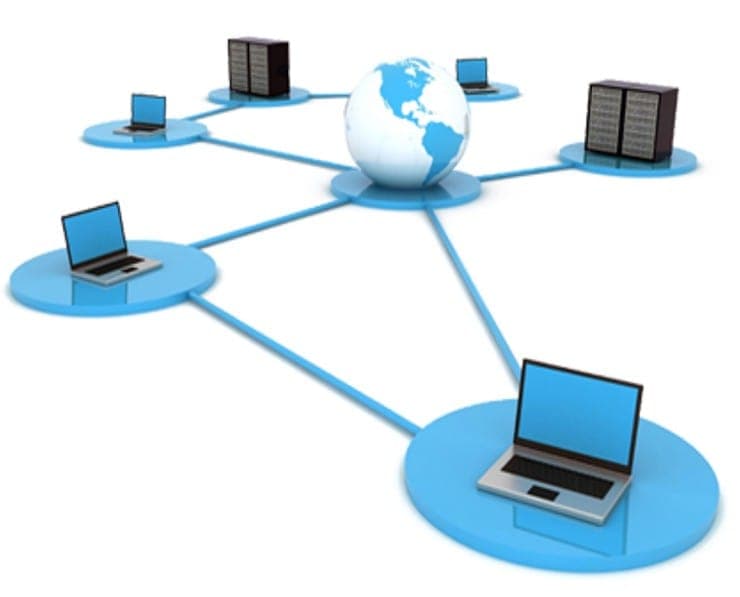Student Feedback
300-115: CCNP Cisco IP Switched Networks (SWITCH v2.0) Certification Video Training Course Outline
Start Here
Network Campus Designs
Switch Operations
Start Here
300-115: CCNP Cisco IP Switched Networks (SWITCH v2.0) Certification Video Training Course Info
Cisco SWITCH 300-115 Online Training: Hands-On IP Switched Networks
A Complete Exploration of Cisco SWITCH: Concepts, Configuration, and Best Practices for Networking Professionals
What You Will Learn From This Course
This course is designed to provide a comprehensive understanding of Cisco IP switched networks, preparing participants to excel in the Cisco 300-115 SWITCH exam. By the end of the training, learners will have developed practical skills and theoretical knowledge required to design, implement, and troubleshoot enterprise-level switched networks. The course emphasizes hands-on exercises, real-world scenarios, and best practices in configuring Layer 2 technologies, securing infrastructure, and managing network services. Participants will gain the ability to plan, implement, and verify network switching solutions using Cisco Enterprise Campus Architecture principles. The knowledge gained in this course forms a solid foundation for advanced network management and CCNP Routing & Switching certification.
Learning Objectives
Master the core concepts and protocols of Layer 2 switching in enterprise networks, including VLANs, STP, and EtherChannel.
Learn how to configure, monitor, and troubleshoot Cisco switches to ensure optimal network performance.
Understand infrastructure security features and implement secure switching solutions to protect network data.
Gain expertise in managing and configuring network services such as DHCP snooping, ARP inspection, and port security.
Develop the skills to design and implement complex enterprise switching solutions according to Cisco Campus Architecture guidelines.
Learn to optimize network performance, troubleshoot common switching issues, and ensure high availability in enterprise environments.
Acquire hands-on experience with configuration, verification, and troubleshooting exercises to reinforce theoretical knowledge.
Prepare effectively for the Cisco 300-115 SWITCH exam, demonstrating proficiency in implementing IP switched networks.
Target Audience
This course is intended for networking professionals and IT specialists who wish to enhance their skills in enterprise network switching and achieve CCNP certification. Typical participants include:
Network Engineers seeking advanced knowledge in Cisco switched networks.
Network Technicians responsible for managing, configuring, and troubleshooting switches in enterprise environments.
Support Engineers who require in-depth understanding of switched network infrastructure.
Systems Engineers involved in the planning and deployment of network solutions.
Network Analysts tasked with monitoring, evaluating, and maintaining network performance.
Senior Network Administrators aiming to strengthen their expertise in network design, configuration, and troubleshooting.
This course is also beneficial for IT professionals who want to advance their careers in network administration, enterprise network management, and Cisco-certified roles. The hands-on exercises and exam-focused content help learners bridge the gap between theory and practical implementation.
Requirements
To succeed in this course, participants should have a basic understanding of networking concepts, IP addressing, and routing fundamentals. While the course is designed to start with foundational topics in switching, familiarity with Cisco network devices and commands will accelerate learning and enable smoother progress. Participants should also have access to simulation tools or physical lab equipment for practice exercises to gain real-world experience.
Prerequisites
The formal prerequisite for the Cisco 300-115 SWITCH exam is a CCNA Routing and Switching certification or equivalent knowledge. Candidates are expected to be comfortable with network fundamentals, including IP addressing, subnetting, and basic routing concepts. Additionally, awareness of topics from the Cisco ROUTE (300-101) and TSHOOT (300-135) exams, such as IP routing, network troubleshooting, and Cisco device configuration, will be highly beneficial. While prior experience with enterprise switching is not mandatory, hands-on familiarity with Cisco devices, VLAN configuration, and switch management commands is recommended.
This course builds on foundational knowledge to deliver advanced switching skills required in enterprise environments. Learners will progress from understanding Layer 2 technologies to mastering complex switching protocols, infrastructure security, and network services. The combination of theoretical learning and practical exercises ensures that participants develop the expertise necessary to design, implement, and troubleshoot switched networks efficiently.
Cisco switched networks form the backbone of enterprise connectivity. Efficient management of switches, VLANs, and network services is crucial to maintaining high performance, reliability, and security in modern organizations. This course emphasizes the design and implementation of scalable, high-availability networks that follow Cisco’s best practices and the Enterprise Campus Architecture model. Participants will gain proficiency in configuring access, distribution, and core layer switches, understanding spanning-tree operations, and implementing port-channel configurations for redundancy and load balancing.
Layer 2 technologies are central to enterprise switching, and this course provides a deep dive into VLANs, trunking, EtherChannel, and inter-VLAN routing. By understanding these technologies, learners will be able to segment networks, reduce broadcast domains, and improve overall network efficiency. The course also covers switch security features such as port security, DHCP snooping, dynamic ARP inspection, and storm control, enabling participants to secure their enterprise networks against common threats.
Infrastructure services such as DHCP, ARP, and network monitoring are essential for network operations. Participants will learn to configure and manage these services on Cisco switches, ensuring devices can communicate efficiently and administrators can monitor network health effectively. Troubleshooting exercises help learners identify and resolve common network issues, reinforcing their problem-solving skills and preparing them for real-world scenarios.
By the end of this part of the course, participants will have a strong understanding of enterprise switching fundamentals, infrastructure security principles, and the role of network services in maintaining high-performance switched networks. This foundational knowledge sets the stage for more advanced topics in subsequent parts of the course, enabling learners to implement and manage complex Cisco switching solutions with confidence.
Hands-on labs, practical examples, and simulation exercises are incorporated throughout the course to help participants apply theoretical knowledge in real-world environments. These exercises are designed to reinforce learning, develop troubleshooting skills, and prepare participants for both the Cisco 300-115 SWITCH exam and enterprise network deployment tasks.
Completing this course will enable learners to confidently plan, configure, and verify switched network solutions, ensuring efficient data flow, high availability, and robust network security. Participants will leave with the knowledge and skills necessary to manage modern enterprise switching environments and progress toward CCNP Routing & Switching certification.
Course Modules / Sections
This Cisco 300-115 SWITCH course is divided into structured modules designed to provide a complete learning journey, from foundational concepts to advanced enterprise switching skills. Each module focuses on practical implementation, real-world scenarios, and the knowledge required to pass the Cisco SWITCH exam and manage enterprise-level switched networks.
The first module introduces the fundamentals of Layer 2 technologies. Learners explore the role of switches in enterprise networks, the functionality of VLANs, and the significance of network segmentation. Participants gain practical experience configuring and managing VLANs, trunks, and access ports. Understanding these basic switching principles is essential for designing scalable and efficient networks.
The second module delves into spanning-tree protocols. Spanning-tree is critical for maintaining loop-free Layer 2 topologies in large networks. Participants learn about the operation of Rapid Spanning Tree Protocol (RSTP), Multiple Spanning Tree Protocol (MSTP), and traditional Spanning Tree Protocol (STP). Practical exercises include configuring root bridges, adjusting port priorities, and troubleshooting common STP issues. Mastery of spanning-tree ensures network stability and high availability.
The third module focuses on EtherChannel and link aggregation techniques. EtherChannel enables multiple physical links to act as a single logical link, increasing bandwidth and providing redundancy. Learners practice configuring PortChannel interfaces, managing load balancing, and troubleshooting EtherChannel configurations. These skills are critical for designing resilient enterprise networks that can handle high traffic volumes without interruption.
The fourth module covers infrastructure security in switched networks. This includes techniques such as port security, DHCP snooping, dynamic ARP inspection, and storm control. Participants learn to configure switch security features to prevent unauthorized access, mitigate attacks, and ensure the integrity of network operations. This module emphasizes real-world scenarios, helping learners protect enterprise networks from common security threats.
The fifth module explores infrastructure services essential to enterprise networks. Topics include managing Layer 2 and Layer 3 network services such as DHCP, HSRP, VRRP, and GLBP. Learners understand how these services support network reliability and availability. Hands-on labs enable participants to configure and verify services, troubleshoot common issues, and ensure seamless communication between devices across the network.
The final module integrates all previously learned concepts through comprehensive lab exercises and case studies. Learners design, implement, and verify enterprise switching solutions that follow Cisco Campus Architecture best practices. This module ensures that participants are prepared to apply their knowledge in real-world scenarios, reinforcing practical skills alongside theoretical understanding.
Key Topics Covered
This course provides in-depth coverage of key topics that are essential for mastering Cisco IP switched networks and passing the 300-115 SWITCH exam. The topics are designed to give participants practical skills while reinforcing conceptual knowledge.
Layer 2 technologies form the foundation of this course. Learners gain mastery over VLAN creation, management, and configuration. Trunking between switches, VTP, and inter-VLAN routing are explored in detail. Participants practice configuring access ports, trunk ports, and VLAN assignment to optimize network segmentation and efficiency. Understanding VLAN operation and management is critical for maintaining scalable and organized network architectures.
Spanning-tree protocols are covered extensively. Participants learn the operation of STP, RSTP, and MSTP, including root bridge election, port roles, and loop prevention mechanisms. Practical exercises include configuring spanning-tree priorities, enabling PortFast, and troubleshooting blocked ports. Mastery of spanning-tree protocols ensures resilient network topologies and reduces downtime caused by loops in the network.
EtherChannel and link aggregation are emphasized to increase redundancy and bandwidth. Participants configure static and dynamic EtherChannel links, manage load balancing, and troubleshoot misconfigurations. Real-world scenarios demonstrate the importance of redundancy in enterprise networks, highlighting how EtherChannel improves both performance and network reliability.
Infrastructure security is a critical component of this course. Learners configure port security to restrict access to authorized devices, implement DHCP snooping to prevent rogue DHCP attacks, and use dynamic ARP inspection to safeguard against ARP spoofing. Storm control is taught to protect the network from broadcast, multicast, and unicast storms. These features enable participants to secure enterprise switching environments effectively.
Infrastructure services, including DHCP, HSRP, VRRP, and GLBP, are explored in detail. Learners understand the configuration, verification, and troubleshooting of these services to ensure high availability and redundancy. Emphasis is placed on hands-on configuration, enabling participants to deploy services that maintain continuous network connectivity.
Advanced troubleshooting techniques are integrated throughout the course. Participants learn to analyze network issues, use diagnostic commands, and resolve common problems in switching environments. This includes VLAN misconfigurations, spanning-tree failures, EtherChannel errors, and service interruptions. Troubleshooting skills are reinforced through lab exercises and scenario-based activities.
The course also covers network design principles, including the Cisco Enterprise Campus Architecture. Participants learn to design scalable, resilient, and secure switching networks that adhere to best practices. Case studies demonstrate how to integrate Layer 2 and Layer 3 technologies, implement redundancy, and optimize performance in enterprise networks.
Teaching Methodology
The teaching methodology for this Cisco 300-115 SWITCH course combines theoretical learning with hands-on practical exercises to ensure comprehensive understanding and skill development. Each concept is introduced with a detailed explanation, followed by demonstrations and practical labs that allow learners to apply knowledge in real-world scenarios.
Instructor-led lectures provide a step-by-step approach to mastering Cisco switched network concepts. Complex topics such as spanning-tree operations, EtherChannel configuration, and network security are broken down into manageable modules with clear explanations. Participants are encouraged to follow along with lab exercises to reinforce learning.
Hands-on labs are a core component of the course. Learners perform configurations on physical or simulated Cisco switches, gaining experience with VLANs, trunks, port security, EtherChannel, and network services. Lab exercises are designed to mirror real-world enterprise environments, ensuring that participants can apply their skills effectively in professional settings.
Interactive scenarios and case studies are used to bridge theory and practice. Participants analyze network designs, troubleshoot simulated problems, and implement solutions that follow Cisco best practices. This approach enhances problem-solving skills and prepares learners for practical challenges encountered in enterprise networks.
The course emphasizes active learning through step-by-step guidance, instructor feedback, and peer collaboration. Learners are encouraged to experiment with configurations, test their understanding, and validate results using verification commands and troubleshooting techniques. This methodology ensures that participants gain both conceptual knowledge and practical expertise.
Supplemental learning materials, including detailed configuration guides, diagrams, and simulation exercises, support the learning process. Participants can revisit concepts, practice configurations, and reinforce understanding outside of class sessions. The combination of lectures, labs, and case studies ensures a well-rounded learning experience.
Assessment & Evaluation
Assessment and evaluation are integral components of the Cisco 300-115 SWITCH course, ensuring that participants achieve mastery of course objectives and are fully prepared for the SWITCH exam. A variety of evaluation methods are employed to measure knowledge, practical skills, and problem-solving abilities.
Quizzes and knowledge checks are incorporated throughout the course to assess understanding of key concepts. These assessments cover Layer 2 technologies, spanning-tree protocols, EtherChannel, infrastructure security, and network services. Quizzes provide immediate feedback, allowing learners to identify areas requiring additional focus.
Practical lab evaluations are conducted to measure participants’ ability to configure, troubleshoot, and verify switched networks. Learners perform real-world tasks, including VLAN configuration, spanning-tree management, port security implementation, EtherChannel setup, and service configuration. Lab assessments ensure that participants can apply theoretical knowledge in practical environments.
Scenario-based exercises are used to evaluate problem-solving and troubleshooting skills. Participants analyze network issues, determine root causes, and implement solutions following best practices. These exercises mimic real enterprise network challenges, helping learners develop critical thinking skills and practical expertise.
Final assessments combine written and practical evaluations to ensure comprehensive understanding of the course material. Participants demonstrate proficiency in all key topics, including advanced Layer 2 technologies, infrastructure security, network services, and troubleshooting. Successful completion of assessments indicates readiness for the Cisco 300-115 SWITCH exam and real-world network implementation tasks.
Continuous feedback is provided by instructors throughout the course. Participants receive guidance on configuration errors, troubleshooting approaches, and best practices for implementing enterprise networks. This ongoing evaluation reinforces learning, corrects misconceptions, and ensures that participants achieve the desired level of proficiency.
The course also encourages self-assessment and peer review. Learners reflect on their performance, compare solutions with peers, and identify areas for improvement. This collaborative approach enhances understanding, builds confidence, and promotes mastery of enterprise switching concepts.
Completion of the course, combined with successful assessments, ensures that participants possess the practical skills, theoretical knowledge, and confidence required to implement, manage, and troubleshoot Cisco switched networks in enterprise environments. Learners leave with a clear understanding of advanced switching concepts, infrastructure security, and network services, fully prepared for the Cisco 300-115 SWITCH certification exam.
Benefits of the Course
This Cisco 300-115 SWITCH course provides a comprehensive learning experience for IT professionals seeking advanced knowledge in enterprise switching and preparing for the Cisco SWITCH exam. Participants gain both theoretical knowledge and practical skills required to design, configure, and manage modern enterprise networks. One of the primary benefits of this course is mastery of Layer 2 technologies, including VLANs, trunking, spanning-tree protocols, and EtherChannel, which are essential for maintaining efficient, secure, and high-performance networks.
The course emphasizes hands-on practice and real-world scenarios, allowing learners to implement configurations on Cisco switches, troubleshoot network issues, and verify solutions in simulated enterprise environments. By completing the labs and exercises, participants acquire practical experience that can be directly applied in professional networking roles. This combination of theoretical and practical knowledge ensures participants are well-prepared to handle complex network challenges.
Another significant benefit is the focus on infrastructure security. Learners gain the ability to implement port security, DHCP snooping, dynamic ARP inspection, and storm control to protect enterprise networks from internal and external threats. Understanding these security mechanisms helps network professionals reduce vulnerabilities, prevent unauthorized access, and ensure reliable network operations.
The course also provides an in-depth understanding of network services essential for enterprise environments. Participants learn to configure and manage HSRP, VRRP, GLBP, and other redundancy protocols to ensure high availability. Knowledge of these services is crucial for minimizing network downtime and maintaining consistent connectivity across critical systems.
Participants benefit from exposure to advanced troubleshooting techniques. By learning to identify and resolve common network issues, participants develop problem-solving skills and gain confidence in maintaining and optimizing enterprise networks. Practical troubleshooting labs reinforce learning and equip participants to handle real-world network challenges efficiently.
The course content is aligned with Cisco’s Enterprise Campus Architecture, ensuring that participants understand industry best practices for designing scalable, resilient, and secure switching networks. This knowledge is highly valuable for networking professionals seeking to advance their careers, obtain certification, and contribute to enterprise network design and management.
Completion of the course not only prepares participants for the Cisco 300-115 SWITCH exam but also enhances career opportunities. Networking professionals gain credibility, practical skills, and confidence to take on roles such as network engineer, support engineer, system engineer, network analyst, and senior network administrator. The course provides a strong foundation for further Cisco certifications and professional growth in enterprise networking.
Course Duration
The Cisco 300-115 SWITCH course is structured to provide comprehensive coverage of all required topics while ensuring sufficient time for practical exercises, labs, and reinforcement of concepts. The total duration of the course typically ranges from four to six weeks, depending on the learning format and pace. Participants can expect to engage in several hours of instruction per week, supplemented by hands-on labs, exercises, and self-study.
For instructor-led programs, the course is often delivered over multiple sessions, each focusing on specific modules such as Layer 2 technologies, spanning-tree protocols, EtherChannel, infrastructure security, and network services. Each session includes theoretical instruction, demonstrations, and practical exercises to reinforce learning. Participants are encouraged to practice configurations in lab environments to build proficiency and confidence.
Self-paced online formats provide flexibility, allowing learners to complete the course according to their schedules. Video lectures, interactive labs, and simulation exercises are designed to ensure participants can progress at their own pace while gaining the same level of knowledge and practical skills as in instructor-led sessions. Self-paced learners benefit from the ability to review material multiple times, practice configurations repeatedly, and reinforce their understanding of critical concepts.
The duration also allows for sufficient time to focus on advanced troubleshooting techniques. Participants are provided with scenarios simulating real-world enterprise networks, enabling them to analyze issues, apply problem-solving skills, and validate solutions. These exercises are designed to mirror the challenges faced by network engineers and administrators in professional environments.
Time allocation within the course ensures that learners gain mastery over all exam objectives, practical skills, and theoretical knowledge. By the end of the course duration, participants are equipped to confidently implement, manage, and troubleshoot Cisco switched networks and are fully prepared for the Cisco 300-115 SWITCH exam.
Tools & Resources Required
To maximize learning and achieve the full benefits of the Cisco 300-115 SWITCH course, participants require access to specific tools and resources. These resources support hands-on practice, configuration exercises, and simulation of enterprise network environments.
Cisco networking equipment is highly recommended for practical labs. Access to switches, routers, and related network devices enables participants to perform real-world configurations, implement Layer 2 technologies, and test network services. Working with physical devices helps learners understand hardware behavior, connectivity, and troubleshooting techniques in a tangible environment.
Simulation and emulation tools are also valuable resources. Software such as Cisco Packet Tracer, GNS3, or Cisco VIRL allows learners to create virtual networks, configure devices, and practice troubleshooting in a simulated environment. These tools provide flexibility, enabling learners to perform multiple configurations, experiment with network designs, and validate concepts without the need for extensive physical hardware.
Course materials such as lecture slides, configuration guides, and lab manuals are essential resources for understanding theoretical concepts and following step-by-step exercises. Detailed instructions and visual aids help learners configure switches, manage VLANs, implement spanning-tree protocols, and apply security measures accurately. These resources reinforce learning and serve as reference material for exam preparation and professional practice.
Access to online resources and documentation, including Cisco’s official guides, command references, and technical articles, enhances understanding and provides additional guidance on advanced topics. Participants can explore best practices, troubleshooting tips, and configuration examples to deepen their knowledge and apply it effectively in practical scenarios.
Support from instructors or mentors is a valuable resource in both instructor-led and online learning environments. Guidance on complex topics, clarification of doubts, and feedback on lab exercises ensure learners progress efficiently and build confidence in implementing switched network solutions. Interaction with instructors enhances the learning experience and helps participants develop real-world problem-solving skills.
Participants are also encouraged to maintain a dedicated lab environment for practice. This includes access to multiple switches and routers, networking cables, and connectivity tools to replicate enterprise networks. A structured lab setup enables learners to simulate various configurations, practice troubleshooting, and gain hands-on experience that aligns with the Cisco 300-115 SWITCH exam objectives.
Additional study aids, such as practice exams, flashcards, and review guides, help learners evaluate their knowledge and identify areas requiring further focus. These resources complement theoretical instruction and practical exercises, reinforcing learning and ensuring participants are well-prepared for certification and real-world network implementation tasks.
By combining equipment, simulation tools, course materials, online resources, instructor guidance, and practice aids, participants gain a comprehensive learning experience. These tools and resources provide the necessary support to develop expertise in enterprise switching, master the Cisco 300-115 SWITCH exam objectives, and apply knowledge effectively in professional networking environments.
Career Opportunities
Completing the Cisco 300-115 SWITCH course opens up a wide range of career opportunities for networking professionals. The skills acquired in this course prepare participants to handle advanced enterprise network environments, configure and manage Cisco switches, and troubleshoot complex network issues effectively. Professionals with expertise in switched networks are in high demand across industries that rely on robust and secure networking infrastructures.
Network engineers are one of the primary roles that benefit from this course. These professionals design, implement, and maintain enterprise networks, ensuring high performance, reliability, and security. Mastery of Layer 2 technologies, spanning-tree protocols, EtherChannel, and network services allows network engineers to manage large-scale networks efficiently and respond to issues proactively.
Support engineers and network technicians also gain significant advantages from completing this course. They are responsible for daily network operations, troubleshooting connectivity issues, and maintaining network devices. The hands-on skills acquired in the Cisco 300-115 SWITCH course, including configuring VLANs, implementing port security, and troubleshooting network problems, enhance their ability to resolve technical issues quickly and maintain seamless network performance.
System engineers and network analysts benefit from understanding how switches operate within enterprise networks. They analyze network performance, monitor traffic, and ensure that infrastructure services are functioning optimally. Knowledge of HSRP, VRRP, GLBP, and other network redundancy protocols enables these professionals to maintain high availability and prevent downtime in critical business operations.
Senior network administrators and IT managers can leverage the advanced switching knowledge from this course to design scalable, resilient, and secure enterprise networks. They are responsible for overseeing network projects, ensuring adherence to best practices, and guiding junior staff in configuration and troubleshooting processes. Expertise in Cisco switched networks allows them to implement efficient network architectures and optimize infrastructure performance.
Completing this course also provides a foundation for pursuing further Cisco certifications, including CCNP and specialized tracks in network security, design, and advanced routing. These certifications enhance career growth opportunities, increase earning potential, and position professionals as experts in enterprise network management. The practical skills and theoretical knowledge gained from this course make participants highly competitive candidates for roles in large organizations, service providers, and IT consulting firms.
Organizations across industries, including finance, healthcare, education, government, and technology, rely on enterprise networks for seamless communication and data transfer. Professionals trained in Cisco switching technologies are essential for maintaining operational continuity, implementing secure network policies, and ensuring efficient connectivity. This demand creates abundant job opportunities for individuals who complete the Cisco 300-115 SWITCH course.
The course also prepares professionals to take on consulting and network design roles. With advanced knowledge of enterprise switching, learners can advise organizations on best practices for network architecture, security, redundancy, and scalability. Their ability to design and implement complex switching solutions positions them as valuable assets in IT projects and enterprise network deployments.
In addition, participants who complete the course develop troubleshooting expertise that is highly sought after in IT support and network operations centers. Their ability to analyze network problems, identify root causes, and implement effective solutions reduces downtime and enhances overall network performance. This practical experience is a key differentiator for career advancement and professional recognition in the networking industry.
Overall, the Cisco 300-115 SWITCH course equips learners with a combination of advanced technical knowledge, hands-on experience, and industry-recognized certification readiness. These attributes open doors to a variety of career paths, including network engineering, network administration, support engineering, system analysis, and IT consultancy. Professionals who complete this course are well-positioned to meet the demands of modern enterprise networks and excel in their chosen career paths.
Conclusion
The Cisco 300-115 SWITCH course provides comprehensive training in enterprise switching, preparing participants for the SWITCH exam and equipping them with the skills required to manage, configure, and troubleshoot advanced network environments. By covering Layer 2 technologies, spanning-tree protocols, EtherChannel, infrastructure security, and network services, the course ensures learners gain both theoretical knowledge and practical expertise.
Throughout the course, participants engage in hands-on labs, configuration exercises, and scenario-based training that mirror real-world enterprise networks. These practical experiences reinforce learning, improve problem-solving skills, and build confidence in applying knowledge to professional networking environments. Learners develop the ability to implement scalable, resilient, and secure network architectures that follow Cisco best practices and Enterprise Campus Architecture principles.
The course also emphasizes infrastructure security, teaching learners to configure port security, DHCP snooping, dynamic ARP inspection, and storm control. Understanding and implementing these security measures is critical for protecting enterprise networks from unauthorized access, attacks, and operational disruptions. Participants leave the course with the ability to safeguard networks while maintaining high performance and reliability.
Infrastructure services, such as HSRP, VRRP, and GLBP, are thoroughly covered, providing learners with knowledge of redundancy and high-availability mechanisms. This enables professionals to design networks that maintain continuous connectivity, reduce downtime, and support critical business operations. The course ensures participants understand the configuration, verification, and troubleshooting of these services to maintain optimal network performance.
Advanced troubleshooting techniques are integrated into the training, allowing learners to analyze network issues, identify root causes, and implement effective solutions. These skills are essential for maintaining enterprise networks, resolving connectivity issues, and ensuring that network operations run smoothly. Troubleshooting labs simulate real-world problems, preparing learners to handle challenges efficiently and confidently.
The course duration and structured modules provide a clear learning path, enabling participants to progress from foundational concepts to advanced switching and network management. Learners gain mastery over VLANs, trunking, spanning-tree operations, EtherChannel, infrastructure security, and network services. The combination of lectures, labs, case studies, and assessments ensures a well-rounded educational experience.
Participants who complete the Cisco 300-115 SWITCH course not only acquire the technical knowledge required for the exam but also develop practical skills that can be immediately applied in professional settings. They gain the ability to plan, implement, and verify switched network solutions, optimize network performance, and maintain secure and reliable enterprise networks.
This course lays the foundation for career growth in networking, preparing professionals for roles such as network engineer, support engineer, system engineer, network analyst, and senior network administrator. It also provides a pathway for further Cisco certifications, enhancing career prospects, professional credibility, and earning potential. By mastering enterprise switching concepts and implementing real-world solutions, participants become valuable assets to organizations relying on high-performance and secure networks.
Overall, the Cisco 300-115 SWITCH course delivers comprehensive, hands-on, and industry-relevant training that equips networking professionals with the expertise needed to succeed in enterprise environments. Participants gain the confidence, knowledge, and practical experience required to manage complex switching solutions effectively and excel in their careers.
Enroll Today
Enroll in the Cisco 300-115 SWITCH course today to advance your networking skills, gain industry-recognized certification, and open doors to a variety of career opportunities. By participating in this course, you will receive comprehensive training in Layer 2 technologies, spanning-tree protocols, EtherChannel, infrastructure security, and network services. The hands-on labs, configuration exercises, and scenario-based learning will ensure that you develop practical expertise that can be applied directly in professional environments.
Whether you are a network engineer, system administrator, support technician, or IT analyst, this course provides the knowledge and skills required to design, implement, and manage enterprise switching networks. You will also be fully prepared to pass the Cisco 300-115 SWITCH exam, enhancing your credentials and career potential.
Take the next step in your networking career by enrolling today. Gain practical experience, master advanced enterprise switching, and position yourself as a skilled professional capable of handling complex Cisco switched networks. With the combination of expert instruction, hands-on practice, and comprehensive coverage of all exam objectives, this course provides everything you need to succeed in the field of enterprise networking and achieve your professional goals.













